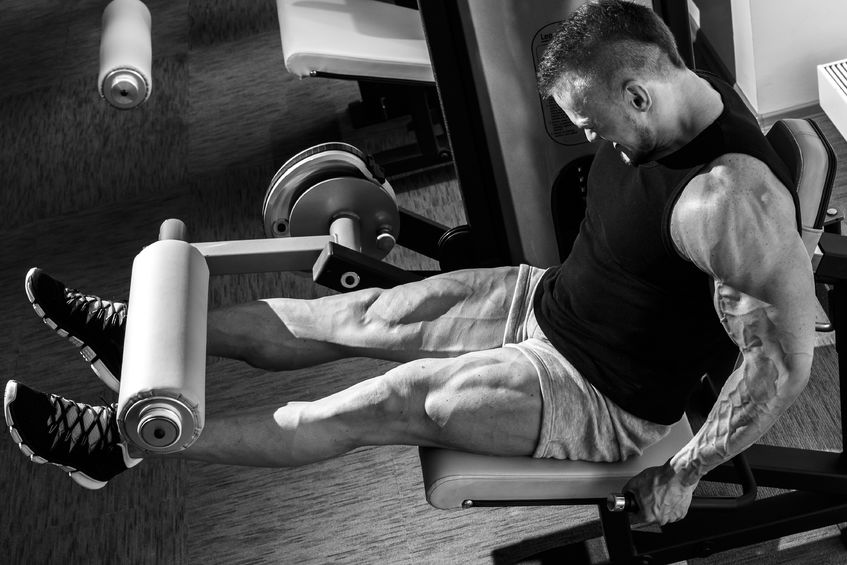Legs day has developed a bit of a reputation over the last few years.
While more people are working out today than ever before, men are still struggling with training their lower body. Chest and arms have gotten plenty of love, but quads and hamstrings have generally been ignored in the weight room.
Maybe you don’t care about developing size. Having big legs looks impressive, but who cares? You’re not a bodybuilder. Why the hell should you care?
Here’s the issue: some of the best compound exercises in the world start with your legs. If they’re too weak to support your growth, developing that impressive overall strength is going to be quite a bit harder.
So, if you’re ready to build massive, powerful legs, here’s your guide to developing the size and strength you want.
Rule 1: Squats are Your Best Friend
Unless you’ve been living in a social media vacuum, you’ve probably noticed the world’s fascination with squats. While they’re definitely great for your glutes (a benefit that Instagram models definitely haven’t shied away from reaping), squats target more than just your ass.
The squat is a compound exercise that ends up engaging your entire lower body. While isolation exercises might be great for targeting specific weak points (something we’ll discuss more later), working every muscle is a great way to encourage overall growth.
Specifically, your quads, hamstrings and calves will end up doing most of the work. Still, there are a variety of stabilizer muscles — muscles that help maintain balance — that will get activated as they work together with those larger muscles throughout the exercise.
There are a few squat variations that you should be using whenever you workout. Assuming that you know proper form for a squat — good posture, driving your knees out, pushing your heels through the floor — you can try out a few different alternatives to the standard squat.
Our personal favorite? The front squat. Completely underrated, the front squat has you placing the weight in front of you, with the bar resting on your shoulders and front delts as you squat.
Why bother with this variation? For starters, this variation challenges your quads quite a bit. Plus, there’s all that lower back engagement that helps strengthen that posterior chain. If that’s not enough for you, front squats can actually force you to engage your core more effectively. Strong cores mean stable lifts, people. Face it: you’re going to need to do back and front squats if you want truly impressive legs.
Rule 2: Deadlifts — The Ugly Stepsister
While squats might get plenty of love these days (or as much love as a legs day exercise can receive, anyway), deadlifts are still just as underappreciated as ever.
It’s a simple exercise, really. Just pick the bar up and put it back down. So, if it’s so simple (and clearly gives people great results), why aren’t more people doing them?
Well, unlike squats, you can get away with poor form when you first start training. When it comes to squats, you learn to have proper posture because you don’t want the weight to crush you. As for deadlifts, unless you’re very aware of your form when you first start, you can easily develop poor form.
Not only does poor form increase your chances of getting injured (or developing aches and pain while lifting), it can also cause you to plateau early. After that happens, you’re going to have to re-learn how to deadlift and start from scratch.
So, the bad news is that it’s easy to mess up and can actually get you hurt if done improperly. The good news? It may just be the single best compound exercise you can do (yes, even better than squats).
When done properly, a deadlift will engage your core, quads, hamstrings, glutes, hips, forearms, biceps… you get the idea. That kind of complete muscle engagement just isn’t possible with any other exercise. If you’re serious about building stronger, larger legs (and a stronger body, for that matter) this is the exercise that you’ll need.
Rule 3: You’re Only as Strong as Your Weakest Link
With all this talk about compound exercises, you would think that we’d recommend you stay away from isolation exercises. Actually, we love isolation exercises. They really can be game-changers, especially if you’ve always had that one pesky muscle group that just can’t seem to grow.
Doing only isolation exercises leads to having a bunch of muscles that don’t know how to work together. Doing only compound exercises means that you get stuck because one of your muscle groups is naturally too weak.
Weak hamstrings? Take some time to do some stiff leg deadlifts. Weak calves? Don’t be afraid to do some weighted calf raises. There’s no reason to avoid supplementary exercises. If you’re serious about this, you need to understand that building massive legs requires both kinds of exercises.












-300x200.jpg)













